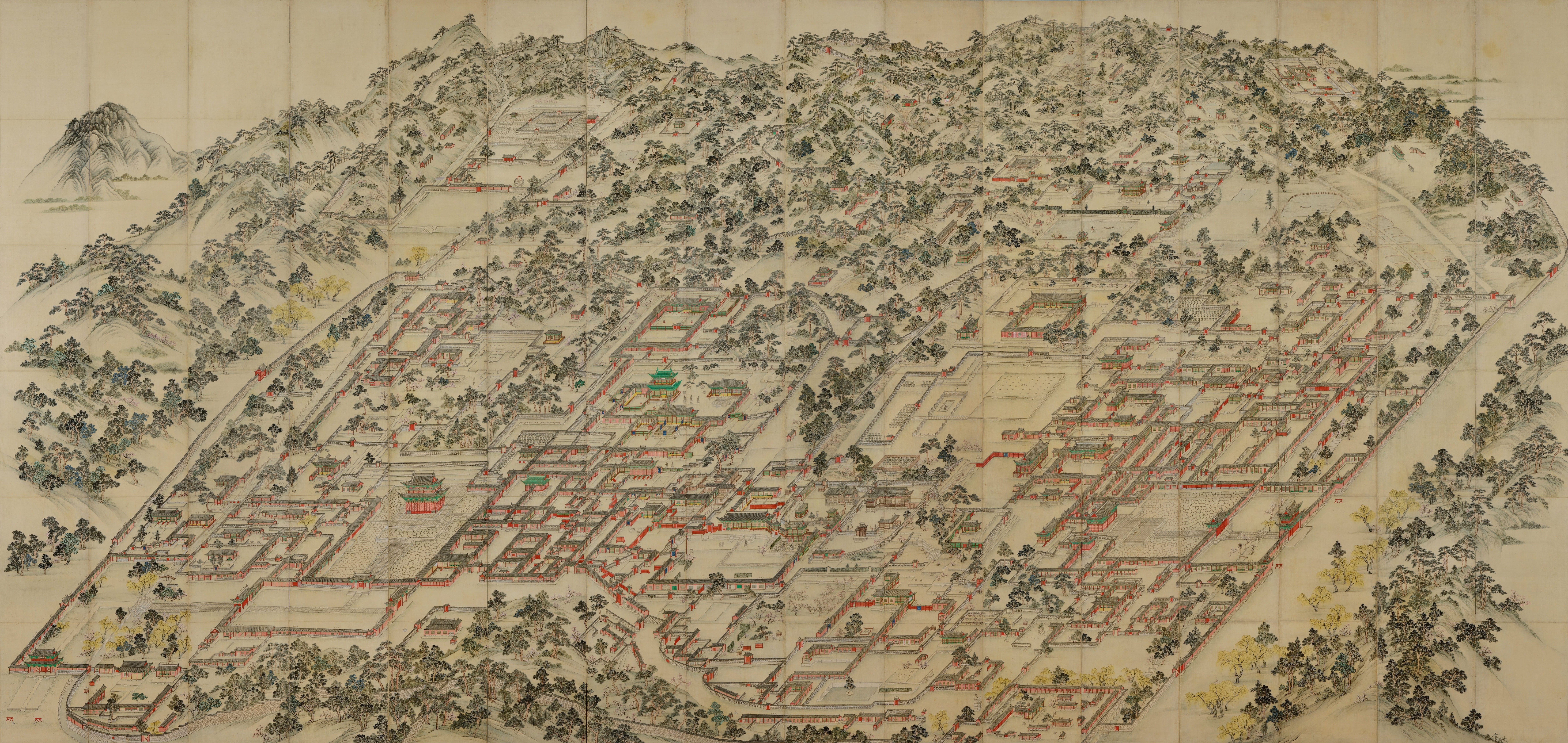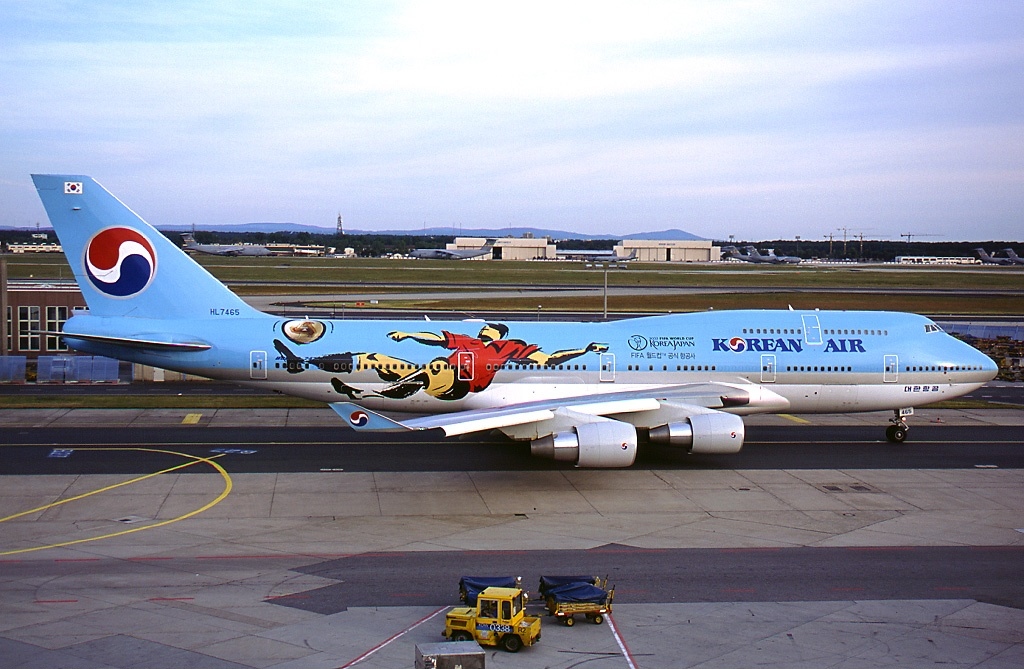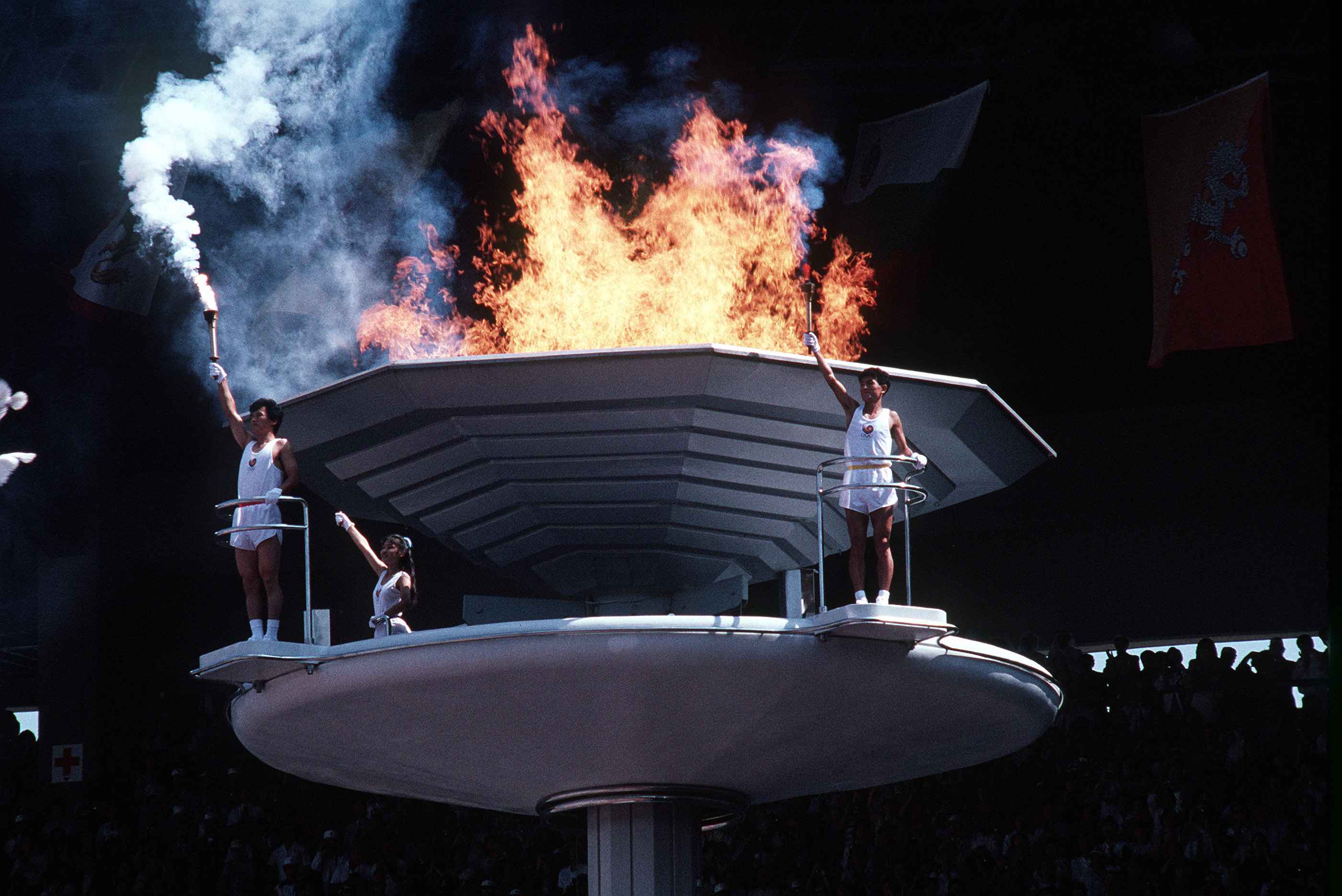|
Architecture Of South Korea
South Korean architecture refers to any architecture in South Korea, which includes architecture from Neolithic–7th century (B.C.E.), three-kingdoms of Korea, Goryeo, Joseon, Japanese occupation, Korean War, and modern architecture. Historic architecture Located in Seoul is the Gwangtonggwan, the oldest continuously-operating bank building in Korea. It was registered as one of city's protected monuments on March 5, 2001. Joseon Architecture Image:Korea-Gangneung-Ojukheon-01.jpg, A typical yangban house in Gangneung. Image:Korea-Gangneung-Ojukheon-02.jpg, Trees and flowers were carefully arranged to make a nice view. Image:Korea-Gangneung-Seongyojang-01.jpg, Seongyojang, a grandiose country house for a prominent yangban family in Gangneung. Image:Korea-Gangneung-Seongyojang-02.jpg, The presence of ''gulttuk'' or chimney is a unique characteristic of Korean architecture which is rarely found in its other Asian counterparts. Image:Korea-Gangneung-Seongyojang-03.jpg, Entr ... [...More Info...] [...Related Items...] OR: [Wikipedia] [Google] [Baidu] |
Changdeokgung0001
Changdeokgung (Hangul: 창덕궁, Hanja: 昌德宮; literally, "The Palace of Prospering Virtue"), also known as Changdeokgung Palace or Changdeok Palace, is set within a large park in Jongno District, Seoul, South Korea. It is one of the "Five Grand Palaces" built by the kings of the Joseon dynasty (1392–1897). As it is located east of Gyeongbok Palace, Changdeokgung—along with Changgyeonggung—is also referred to as the "East Palace" (동궐, 東闕, ''Donggwol''). Changdeokgung was the most favored palace of many Joseon kings and retained many elements dating from the Three Kingdoms of Korea period that were not incorporated in the more contemporary Gyeongbokgung. One such element is the fact that the buildings of Changdeokgung blend with the natural topography of the site instead of imposing themselves upon it. Like the other Five Grand Palaces in Seoul, it was heavily damaged during the Japanese occupation of Korea (1910–1945). Currently, only about 30% of the pre-Japa ... [...More Info...] [...Related Items...] OR: [Wikipedia] [Google] [Baidu] |
Gyeongbokgung
Gyeongbokgung (), also known as Gyeongbokgung Palace or Gyeongbok Palace, was the main royal palace of the Joseon dynasty. Built in 1395, it is located in northern Seoul, South Korea. The largest of the ''Five Grand Palaces'' built by the Joseon dynasty, Gyeongbokgung served as the home of Kings of the Joseon dynasty, the Kings' households, as well as the government of Joseon. Gyeongbokgung continued to serve as the main palace of the Joseon dynasty until the premises were destroyed by fire during the Imjin War (1592–1598) and abandoned for two centuries. However, in the 19th century, all of the palace's 7,700 rooms were later restored under the leadership of Prince Regent Heungseon during the reign of King Gojong. Some 500 buildings were restored on a site of over 40 hectares. The architectural principles of ancient Korea were incorporated into the tradition and appearance of the Joseon royal court. In the early 20th century, much of the palace was systematically destroye ... [...More Info...] [...Related Items...] OR: [Wikipedia] [Google] [Baidu] |
Park Kil-ryong
A park is an area of natural, semi-natural or planted space set aside for human enjoyment and recreation or for the protection of wildlife or natural habitats. Urban parks are green spaces set aside for recreation inside towns and cities. National parks and country parks are green spaces used for recreation in the countryside. State parks and provincial parks are administered by sub-national government states and agencies. Parks may consist of grassy areas, rocks, soil and trees, but may also contain buildings and other artifacts such as monuments, fountains or playground structures. Many parks have fields for playing sports such as baseball and football, and paved areas for games such as basketball. Many parks have trails for walking, biking and other activities. Some parks are built adjacent to bodies of water or watercourses and may comprise a beach or boat dock area. Urban parks often have benches for sitting and may contain picnic tables and barbecue grills. The largest ... [...More Info...] [...Related Items...] OR: [Wikipedia] [Google] [Baidu] |
Space Group Of Korea
Space is the boundless three-dimensional extent in which objects and events have relative position and direction. In classical physics, physical space is often conceived in three linear dimensions, although modern physicists usually consider it, with time, to be part of a boundless four-dimensional continuum known as spacetime. The concept of space is considered to be of fundamental importance to an understanding of the physical universe. However, disagreement continues between philosophers over whether it is itself an entity, a relationship between entities, or part of a conceptual framework. Debates concerning the nature, essence and the mode of existence of space date back to antiquity; namely, to treatises like the ''Timaeus'' of Plato, or Socrates in his reflections on what the Greeks called ''khôra'' (i.e. "space"), or in the ''Physics'' of Aristotle (Book IV, Delta) in the definition of ''topos'' (i.e. place), or in the later "geometrical conception of place" as "space ... [...More Info...] [...Related Items...] OR: [Wikipedia] [Google] [Baidu] |
Samsung
The Samsung Group (or simply Samsung) ( ko, 삼성 ) is a South Korean multinational manufacturing conglomerate headquartered in Samsung Town, Seoul, South Korea. It comprises numerous affiliated businesses, most of them united under the ''Samsung'' brand, and is the largest South Korean (business conglomerate). Samsung has the eighth highest global brand value. Samsung was founded by Lee Byung-chul in 1938 as a trading company. Over the next three decades, the group diversified into areas including food processing, textiles, insurance, securities, and retail. Samsung entered the electronics industry in the late 1960s and the construction and shipbuilding industries in the mid-1970s; these areas would drive its subsequent growth. Following Lee's death in 1987, Samsung was separated into five business groups – Samsung Group, Shinsegae Group, CJ Group and Hansol Group, and JoongAng Group. Notable Samsung industrial affiliates include Samsung Electronics (the wor ... [...More Info...] [...Related Items...] OR: [Wikipedia] [Google] [Baidu] |
Chaebol
A chaebol (, ; ) is a large industrial South Korean conglomerate run and controlled by an individual or family. A chaebol often consists of multiple diversified affiliates, controlled by a person or group whose power over the group often exceeds legal authority. Several dozen large South Korean family-controlled corporate groups fall under this definition. The term first appeared in English text in 1972. Chaebols have also played a significant role in South Korean politics. In 1988, a member of a chaebol family, Chung Mong-joon, president of Hyundai Heavy Industries, successfully ran for the National Assembly of South Korea. Other business leaders were also chosen to be members of the National Assembly through proportional representation. Hyundai has made efforts in the thawing of North Korean relations, despite some controversy. Many South Korean family-run chaebols have been criticized for low dividend payouts and other governance practices that favor controlling shareho ... [...More Info...] [...Related Items...] OR: [Wikipedia] [Google] [Baidu] |
Football World Cup 2002
The 2002 FIFA World Cup, also branded as Korea Japan 2002, was the 17th FIFA World Cup, the quadrennial Association football, football world championship for List of men's national association football teams, men's national teams organized by FIFA. It was held from 31 May to 30 June 2002 at sites in South Korea and Japan, with its 2002 FIFA World Cup Final, final match hosted by Japan at Nissan Stadium (Yokohama), International Stadium in Yokohama. A field of 32 teams qualified for this World Cup, which was the first to be held in Asia, the first to be held outside of the Americas or Europe, as well as the first to be jointly-hosted by more than one nation. China national football team, China, Ecuador national football team, Ecuador, Senegal national football team, Senegal, and Slovenia national football team, Slovenia made their World Cup debuts. The tournament had several upsets and surprise results, which included the defending champions France national football team, Franc ... [...More Info...] [...Related Items...] OR: [Wikipedia] [Google] [Baidu] |
Asian Games
The Asian Games, also known as Asiad, is a continental multi-sport event held every four years among athletes from all over Asia. The Games were regulated by the Asian Games Federation (AGF) from the first Games in New Delhi, India, until the 1978 Games. Since the 1982 Games, they have been organized by the Olympic Council of Asia (OCA), after the breakup of the Asian Games Federation. The Games are recognized by the International Olympic Committee (IOC) and are described as the second largest multi-sport event after the Olympic Games. There have been nine nations that have hosted the Asian Games. Forty-six nations have participated in the Games, including Israel, which was excluded from the Games altogether after Israel managed to win a silver medal (in their last participation) at the 1974 Asian Games in Iran. The most recent games was held in Jakarta and Palembang, Indonesia from 18 August to 2 September 2018. The next games are scheduled to be held in Hangzhou, Chi ... [...More Info...] [...Related Items...] OR: [Wikipedia] [Google] [Baidu] |
1988 Summer Olympics
The 1988 Summer Olympics (), officially known as the Games of the XXIV Olympiad () and commonly known as Seoul 1988 ( ko, 서울 1988, Seoul Cheon gubaek palsip-pal), was an international multi-sport event held from 17 September to 2 October 1988 in Seoul, South Korea. 159 nations were represented at the games by a total of 8,391 athletes (6,197 men and 2,194 women). 237 events were held and 27,221 volunteers helped to prepare the Olympics. The 1988 Seoul Olympics were the second summer Olympic Games held in Asia and the first held in South Korea. As the host country, South Korea ranked fourth overall, winning 12 gold medals and 33 medals in the competition. 11,331 media (4,978 written press and 6,353 broadcasters) showed the Games all over the world. These were the last Olympic Games of the Cold War, as well as for the Soviet Union and East Germany, as both ceased to exist before the next Olympic Games in 1992. The Soviet Union dominated the medal count, winning 55 gold and ... [...More Info...] [...Related Items...] OR: [Wikipedia] [Google] [Baidu] |
1986 Asian Games
The 1986 Asian Games ( ko, 1986년 아시아 경기대회/1986년 아시안 게임, Cheon gubaek palsip-yuk nyeon Asia gyeonggi daehoe/Cheon gubaek palsip-yuk nyeon Asian Geim), officially known as the 10th Asian Games and the X Asiad ( ko, 제10회 아시아 경기대회/제10회 아시안 게임, Jesiphoe Asia gyeonggi daehoe/Jesiphoe Asian Geim) and commonly known as Seoul 1986 ( ko, 서울 1986, Seoul Cheon gubaek palsip-yuk) were held from 20 September to 5 October 1986, in Seoul, South Korea. The venues and facilities of the 10th Asiad were the same venues and facilities that would be used in the 1988 Summer Olympics, as it was considered a test event. Seoul had previously been scheduled to host the 1970 games, but it received security threats from neighbouring North Korea, forcing it to give up hosting the games to previous 1966 host Bangkok, Thailand. Host city selection Baghdad, Iraq, Pyongyang, North Korea and Seoul, South Korea were the bidding cities for the Games, ... [...More Info...] [...Related Items...] OR: [Wikipedia] [Google] [Baidu] |
Bedroom Community
A commuter town is a populated area that is primarily residential rather than commercial or industrial. Routine travel from home to work and back is called commuting, which is where the term comes from. A commuter town may be called by many other terms: "bedroom community" (Canada and northeastern US), "bedroom town", "bedroom suburb" (US), "dormitory town", or "dormitory suburb" (Britain/ Commonwealth/Ireland). In Japan, a commuter town may be referred to by the ''wasei-eigo'' coinage . The term "exurb" was used from the 1950s, but since 2006, is generally used for areas beyond suburbs and specifically less densely built than the suburbs to which the exurbs' residents commute. Causes Often commuter towns form when workers in a region cannot afford to live where they work and must seek residency in another town with a lower cost of living. The late 20th century, the dot-com bubble and United States housing bubble drove housing costs in Californian metropolitan areas to hist ... [...More Info...] [...Related Items...] OR: [Wikipedia] [Google] [Baidu] |








_boycotting_Asian_countries_(red)_01.png)
